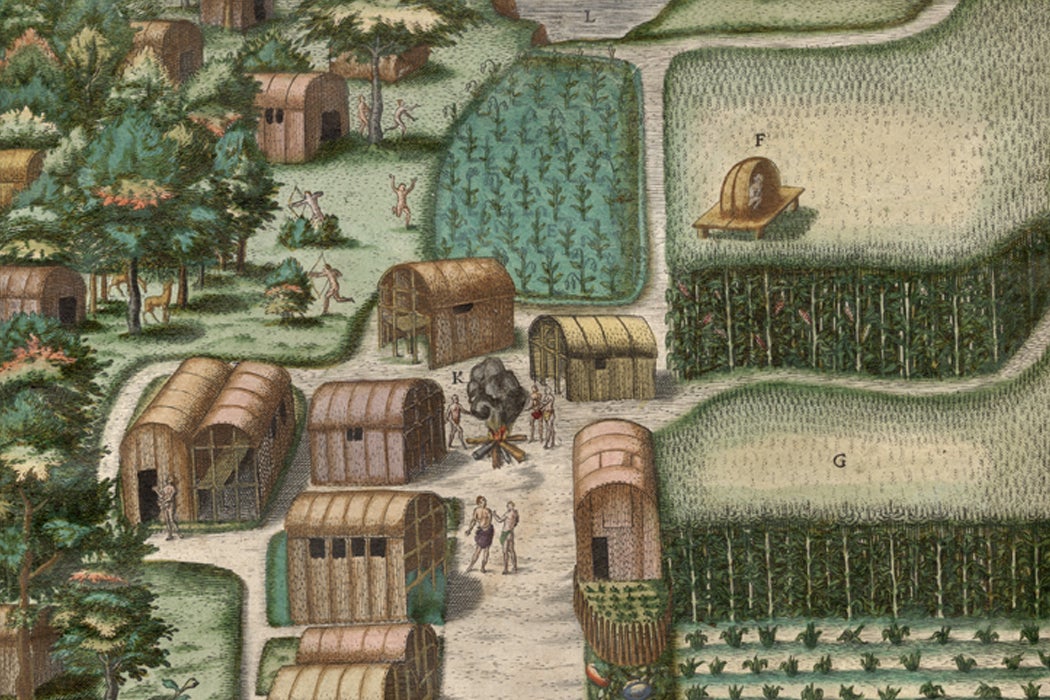There’s a myth that Europeans arrived in the Americas and divided the land up, mystifying Native Americans who had no concept of property rights. In reality, historian Allen Greer writes, various American societies had highly-developed systems of property ownership and use. Meanwhile, European colonists sometimes viewed land as a common resource, not just as individual property.
The mythic vision of clashing views of property goes back to John Locke. In 1689, the Enlightenment philosopher contrasted the “wild Indian” in America with the European property owner. Locke’s imaginary “Indian” had the right to the deer he kills but no claim on the forest itself. In contrast, Locke argued, white men could own property because they mixed their labor with the land, clearing, cultivating, and fencing it.
In reality, Greer writes, most people in the pre-Columbian Americas were primarily farmers, not hunter-gatherers. Around major Mesoamerican cities, cropland might be owned by households, temples, or urban nobles. As in Europe, less-cultivated areas like forests and deserts acted as a kind of regulated commons. They might belong to a person, family, or community, with legal provisions for local people to gather wood, berries, or game. In Iroquois and Algonquian nations, women in a particular family typically owned specific maize fields, although people of the area often farmed them, and distributed the harvest, collectively.
Even among North American hunter-gatherer nations, Greer writes, societies often allocated hunting grounds to specific families. And these people didn’t simply harvest nature’s bounty. They used techniques like diverting streams and burning underbrush to manage the land to ensure future harvests.
If the idea of pre-Columbian America as a universal commons is a myth, so is the story that Europeans immediately divided the land into individual plots of private property. Greer notes that in Mexico and other parts of the Americas, Spaniards established pastures and other common lands around their cities. Officials granted parts of this land to individual owners, but much of it remained a municipal commons owned by the town, with all residents entitled to share its bounty.
Similarly, in colonial New England, communal pastures were common. Some towns also used open-field tillage systems in which people owned plots of cropland individually but managed them collectively. It was only gradually, over the course of the seventeenth and early eighteenth centuries, that New Englanders divided most agricultural land into family farms.
Once a Week
When Native and colonial conceptions of property clashed, it was sometimes in the form of Europeans imposing their ideas of common land on territory that was already owned. Colonists often allowed their livestock to roam freely, disrupting the forest ecosystems and ownership systems that provided a livelihood for local people. As a Maryland Native leader named Mattagund explained to colonial authorities, “Your cattle and hogs injure us. You come too near to us to live and drive us from place to place.”
When individual private property did finally become the norm across the Americas, it was through the destruction of prior systems of property rights.







